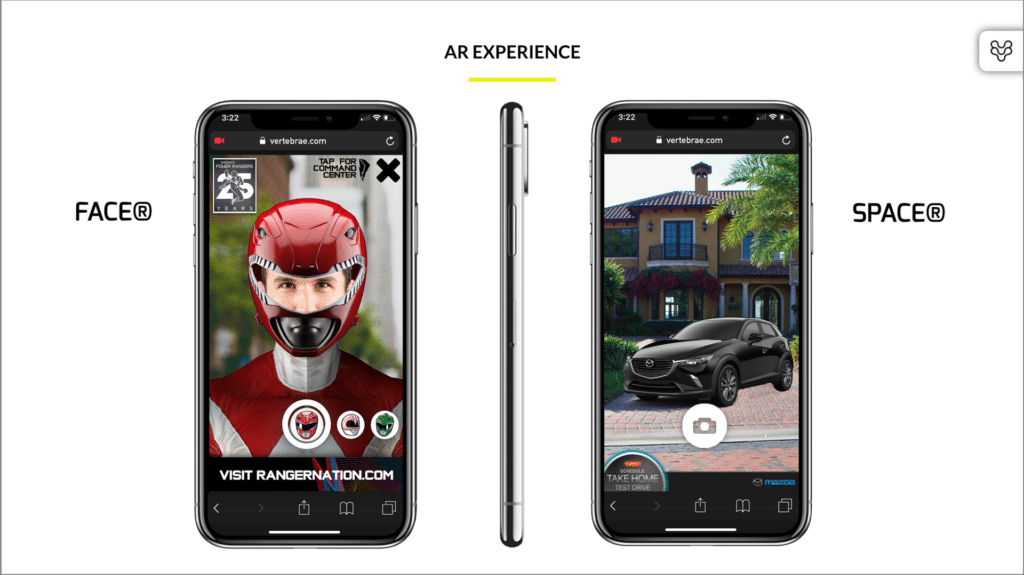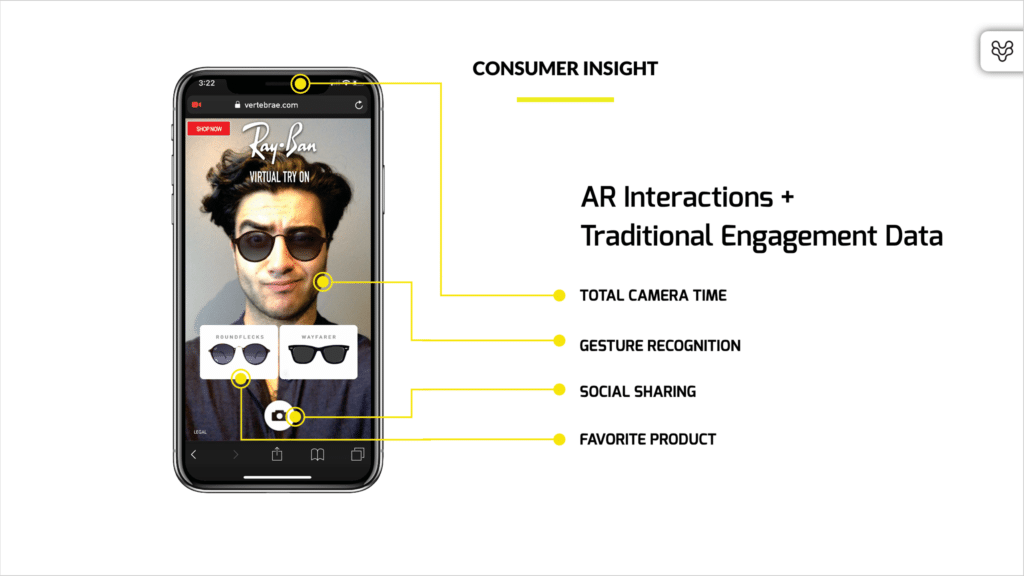If you’re new to our blog, this is a 3-parter. Check out parts 1, AR Advertising on Snapchat, & 2, How to Advertise in Augmented Reality on Facebook, for a deeper dive into in-app AR campaigns. And now for the good stuff… mobile web AR – a how to.
AR Advertising on Mobile Web
Many people may not be aware of this, but you don’t have to be on Snapchat or Facebook or even in-app to experience augmented reality ads. Thanks to updates in the latest versions of Chrome and Safari in 2017, AR is possible just about everywhere… with the right technology, of course. What does this mean for marketers? For one, AR experiences can be delivered on mobile web programmatically via standard ad tags which means the transparency of browser-based advertising, as opposed to in-app, can be applied to AR. Furthermore, it allows marketers to track traditional online advertising metrics, use mature datasets for targeting, and get AR-specific engagement measurements. More on that later. Finally, scale. Delivery on the web means access to literally anyone browsing the internet on their camera-equipped mobile device. Sounds great, right? But how? Let’s start with the creative.
Creative Studio
At Vertebrae, we specialize in mobile web AR, so we’ll talk about this process from our perspective. Because hey, it’s what we know. Successful AR campaigns involve a mix of clever creative, proprietary computer vision technology, and machine learning. Our in-house creative team, Inside Job®, works directly with brands and agencies to build assets from ideation to execution. Similar to Snapchat and Facebook, we offer AR experiences using the front-facing camera (Face®) and using the rear-facing camera (Space®).

With Face® ad formats, the consumer is the star of the brand experience. These formats may be multifaceted involving a carousel of AR lenses for a user to “try on”, animated elements and objects mapping and tracking to a user’s face, and the ability to toggle into and out of a new environment via a green screen effect. Space® formats may involve placing and sizing a 3D object or animation à la dancing hot dog, or placing a user inside something looking out, such as a luxury car. Finally, portals to an exclusive brand experience can be activated, giving a user a sneak peak into a branded world.
Distribution – Mobile Web AR
Like Snapchat and Facebook’s AR ad units, the point of this media is to delight and captivate consumers. Because these experiences are on the web, they can be used to drive different outcomes such as sharing to various social media platforms, redeeming a coupon, adding to a cart or making a purchase. Once an ad experience is assembled creatively, we package it up into an ad tag for delivery on the worldwide mobile web, accessing billions of users via precision targeting on both iOS and Android.
Of course, we can’t talk about AR ad experiences on mobile web without addressing Google’s most recent announcements made at the company’s annual I/O developer conference this year. Coming soon, Google’s Instant Apps feature will support ARCore, meaning users will be able to access AR apps, and therefore AR functionality, without having to download said app. In other words, users will be able to search an item on the web, place it in their world via Instant Apps, and then purchase it via Google Play. Currently limited to Android users, version 7.0 and later, this only involves rear-facing camera experiences (i.e. no face tracking). For delivery across devices and browsers, marketers must look to companies like Vertebrae.
Measurement
And now for the grand finale (drum roll please)… transparency. While all of the standard advertising metrics still apply, the opportunities for a deeper understanding of consumer sentiment toward a brand lie in mobile web AR. When done well, AR advertising promotes interactive play within an ad experience – consumers having candid reactions to a brand’s world – a learning opportunity not lost on us. More specifically, these AR experiences allow measurement of and reporting on things like:
-User’s favorite lens
-The number of times a user smiled in the experience
-Number of social shares
-Number of pictures taken
-And so much more
Essentially, what brands should expect from AR advertising, and can expect from us, is a jackpot of valuable information.

In Conclusion
That said, we may be biased. After all, AR on the web is what we do. When it comes to comprehensive campaigns, Snapchat, Facebook, and mobile web all have their place in the priorities list. Asset creation for this new medium requires AR expertise and insight, as well as customizations from platform to platform. While Facebook is self-serve, it does require 3d assets built outside of AR Studio. Users can assemble Snapchat’s lenses directly in Lens Studio, but again, custom 3d assets must be created elsewhere. For true ad distribution, advertisers rely on Snap’s creative partners.
Our managed service approach includes creative design, assembly, and distribution as part of a larger campaign strategy. The brand, of course, maintains final ownership of the assets. In order to expand our offering, we also work directly with Snap API partners to deploy those same assets across channels, making it even easier for a brand to get up and running in this exciting new medium.
And there you have it – AR advertising creation and execution in 3 posts. For more on mobile web AR, stay tuned or connect with us directly.
Not a current customer but ready to get started?
Demo the Platform Today!Already a current customer? Log in to Axis Today!

